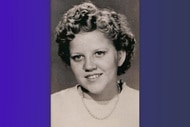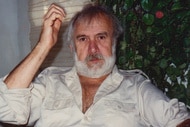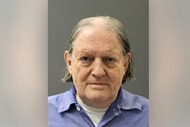Create a free profile to get unlimited access to exclusive videos, breaking news, sweepstakes, and more!
Neighbor Is Arrested After 4-Year-Old Girl Is Found Dead in a Box — But Did He Do It?
Four years after Barbara Jean Horn was found dead, stuffed into a cardboard box, her parents were relieved when an arrest in the case was finally made, but the heartbreaking case was far from over.
Four years after 4-year-old Barbara Jean Horn was found murdered and shoved into a cardboard box on the streets of Philadelphia, the young girl’s 27-year-old neighbor was arrested for the sexual assault and murder.
But did he do it?
It would take decades, two sensational trials, accusations of police and prosecutorial misconduct, and a lengthy legal battle to finally come to an answer more than 30 years after Horn’s heartbreaking death, according to Oxygen’s Dateline: Secrets Uncovered.
RELATED: Everything To Know About Realtor Beverly Carter’s 2014 Murder
Who was Barbara Jean Horn?
Barbara Jean had been the pride and joy of her mom Sharon Fahy and stepfather John Fahy.
“She was my daughter and I raised her as my own,” John told Dateline’s Lester Holt. “The sweetest little girl that ever walked the face of the earth. She was. She was a sweetheart.”
On July 12, 1988, John — who often watched 4-year-old Barbara Jean while Sharon was at work — spent the morning playing with his daughter before deciding to clean out the refrigerator. "Barbara Jean had come in and asked if she could help and I said ‘nah, that’s ok sweetie, you can go outside, just go outside and play,’” John recalled.
It was a decision that would haunt John for decades.
When he realized Barbara Jean hadn’t come back inside for a while, he went to check on her and found her toys scattered on the sidewalk, but no sign of Barbara Jean.

Assuming she’d simply wandered off, John called for Barbara Jean, knocked on neighbor’s doors, and eventually called Sharon and told her to come home.
“I didn’t call police,” he said. “I thought she would be right here.”
But just a few hours after she disappeared, a neighbor found the young girl’s body in a cardboard television box left on the curb.
Police immediately turned their suspicion to John, but Sharon was convinced her husband had nothing to do with the death. “I know he didn’t do it. I would have already murdered him if I thought he did,” she said.
Who was arrested for Barbara Jean Horn’s death?
Multiple eye witnesses also reported seeing an unknown white male around 30 years old, between 160-180 pounds and 5’6” and 5’8” inches tall, lugging the large box down the street. Although authorities were able to create a sketch of the man using the descriptions, four years later, nobody was identified.
“To think that somebody would just purposefully kill your child, don’t make sense,” John said through tears. “You know, it just don’t make sense.”
In 1992, Detective Martin Devlin and his fellow investigators began to focus on a new suspect, the Fahy’s one-time neighbor Walter Ogrod.
At the time of the murder, Ogrod had lived across the street with his roommates, a couple and their young son Charlie. Barbara Jean and Charlie had been best friends and Ogrod told investigators at the time of the disappearance that Barbara Jean had stopped by the home looking for Charlie before she disappeared.
Four years later, Ogrod had moved out of the neighborhood and was working as an overnight delivery driver. Detectives requested to speak with Ogrod after his shift ended. Despite not having slept for 30 hours, Ogrod agreed to go down to the station and answer their questions without an attorney, despite a caution from his friend.
Within six hours, Ogrod had signed a 16-page confession. According to the confession, transcribed by Devlin, Ogrod allegedly admitted to grabbing Barbara Jean when she stopped by the home looking for Charlie and took her into the basement to “play doctor.” When she screamed, he struck her in the head with a weight machine pull down bar, according to the document.
Ogrod was charged with first-degree murder and sexual assault.
But by the time he had reached the holding cell, Ogrod — who would later allege he had been locked in the interrogation room, handcuffed, and denied a lawyer — had already recanted the confession.
RELATED: What Really Happened During the Infamous Murder of Italian Fashion Icon Maurizio Gucci
Walter Ogrod's Trial
The arrest came as a complete shock to Ogrod’s friends, who described him as a “gentle old giant” who would “never hurt anyone.”
But for Barbara Jean’s parents, it seemed like justice may finally be around the corner.
“I hated him,” Sharon confided.
Ogrod went on trial in 1993. Without any physical evidence to link Orgod to the crime or any witnesses who could identify him as the culprit, prosecutors relied primarily on Ogrod’s confession.
Just moments before the jury foreman was set to announce the jury’s unanimous verdict of not guilty, one of the jurors stood up and said he couldn’t agree with it.
The judge declared a mistrial and a furious John leapt over the barrier and lunged at Ogrod, before he was placed in handcuffs himself and led from the courtroom. John was never charged for the courtroom outburst, but the family’s rage was clearly palpable.
Three years later, under a new prosecutor, the case went on trial again. This time, however, prosecutor Judy Rubino also relied on the testimony of a jailhouse snitch, who claimed Ogrod had confessed to killing the child as part of a plot to try to attract Sharon. According to the prosecutor’s theory, Ogrod had tried to pin blame for the murder on John, believing he’d be arrested and Sharon would be grieving and looking for support.
This time, Ogrod was convicted and sentenced to death, giving her family at least some measure of closure.
“There is no justice in a murder. There is no justice,” John said. “You’re never going to find justice, ever. Walter Ogrod’s life doesn’t equal Barbara Jean’s life.”
Questions About Walter Ogrod’s Conviction
Ogrod headed off to death row, but his case eventually caught the eye of criminal justice journalist Thomas Lowenstein, who quickly began to suspect Ogrod had been wrongfully convicted.
Lowenstein noted the lack of physical evidence in the case and the insistence by his friends that Ogrod wasn’t the type of person to commit a violent crime, but it was Lowenstein's visit to Ogrod in prison that convinced him of the man's innocence. Ogrod’s signed confession claimed he had started to cry before confessing, but he was struck by Ogrod’s lack of ability to express his emotion, describing him as talking like Rain Man.
“You know, he couldn’t express feelings to me, but he knew all the facts,” Lowenstein said. “I thought he’s like the Asperger’s kids that my friend works with.”
One of the two men who had heard Ogrod’s supposed confession was man named John Hall, a career criminal who had been used by Philadelphia prosecutors as a snitch in more than a dozen murder cases in exchange for leniency for his own legal woes.
When Lowenstein called Hall’s wife, Phyllis, she admitted he’d lied in about “20 or 30 cases” including Ogrod’s and confessed to helping Hall research the case herself at a local library.
“It didn’t bother John at all putting someone on death row because of what he got out of it,” she told Holt.
She also insisted the second man — who would later go on to testify against Ogrod — had heard the story from Hall, not Ogrod.
There were also Ogrod’s claims about how he had been treated by the police during the interrogation. He told Holt that during the questioning he was handcuffed to the chair and that police locked the door and wouldn’t get him a lawyer even after he had requested one.
“They said we’ll get one when we’re done,” Ogrod insisted.
Lowenstein published a lengthy two-part story in a Philadelphia newspaper about his concerns in 2004. It eventually caught the eye of a new defense team, who worked for years to try to get Ogrod a new trial.
But real movement in the case came in 2017 after new district attorney Larry Krasner poured resources into a conviction integrity unit designed to re-examine past cases. The unit, led by Patricia Cummings, looked at Ogrod’s case and was stunned to learn that prosecutors had not handed over all the evidence in the case to the defense.
Although they argued at trial that Barbara Jean died from being hit with the weight bar, they had evidence from an expert to suggest she didn’t die from the injuries to her head but had been asphyxiated.
They also concluded the jury was given “false, unreliable and incomplete evidence” and that other evidence that would have been in Ogrod’s favor, like a personality profile that found he was “easily manipulated,” was never disclosed to the defense.

When was Walter Ogrod released from prison?
In the Spring of 2020, the team asked the court to vacate Ogrod’s sentence because, according to Cummings, they believed “the conviction as it stands is a gross miscarriage of justice.”
After being presented with the evidence, Barbara Jean’s mother Sharon agreed and began to fight for Ogrod’s freedom.
“Once I had all the facts, I, in my heart, believe that he is the wrong man and he did not do this,” she said.
On June 5, 2020, a judge vacated the conviction and Ogrod was set free after serving 28 years behind bars.
Ogrod later filed a civil lawsuit against the city of Philadelphia, which he settled for $9 million in November of 2023, according to CBS News.
Barbara Jean’s murder case has been reopened, but to date, there have been no new arrests.


































